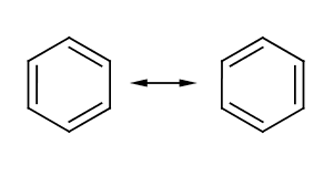Hi, I want to draw a benzene with delocalized conjugated bond(NOT with double or single-bond form) using avogadro, and I want to calculate the HOMO-LUMO values using orca with avogadro input file. Is there any way that I can make a molecule with delocalized electrons in orca?
That’s exactly how quantum chemical programs like Orca work.
You might draw isolated single and double bonds for a benzene. But quantum chemistry programs just get a set of atoms and positions (and the total charge on the molecule).
It’s chemists that like to see single and double bonds, so Avogadro “perceives” them from the output files from Orca (or whatever program you use).
If you measure all the bond lengths after optimizing the geometry in Orca, you’ll see that all the CC bonds are the same length.
Does that help?
Thank you for answering.
But I want to make a input file for orca with Avogadro first, and then I want to get a orca output file(including HOMO-LUMO etc…) using that avogadro input file.
I am not sure if I follow here. Let me recap for a moment:
- You want to use Avogadro to make an input file for ORCA
- You don’t want to use the alternating single and double bonds for… some reason
The way I am seeing this is that you are mistaking the alternating bonds for not being a truly aromatic system, when in reality Avogadro knows that it is aromatic, but can’t display the sort of ‘bond-and-a-half’ that you may be looking for. Recall that benzene is, in terms of resonance, just two structures that flip between each other, as I’ve shown below.
I am in agreement with Geoff, you should create the molecule using the alternating double and single bonds, optimize with the Av2 force fields, and then optimize again with ORCA.
Thank you. Can you explain why I should use Av2 force field specifically for optimizing instead of other force fields?
You can use a variety of force fields or other methods to “clean up” an initial structure. Our main comment here is that ORCA and other quantum chemistry programs often need a fairly “good” geometry to start. If I free-hand sketch a benzene in Avogadro, I probably have bonds that are too long, angles that aren’t close to 120°, etc.
So using a force field to optimize a “rough” structure is useful. Avogadro 1.2 and Avogadro2 are designed to pick a good force field and automatically adjust atom types, etc. in a user-friendly way. But other programs can work too.
